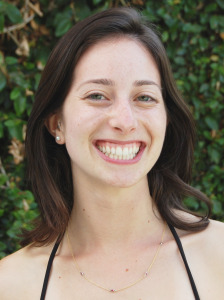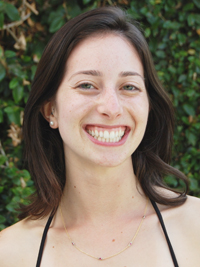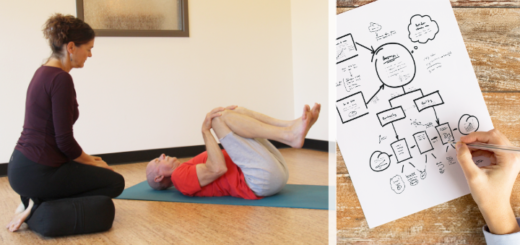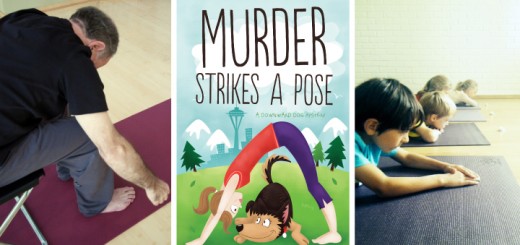So what do you do for a living? How to strengthen your professional identity as a yoga therapist
3Have you ever dreaded the inevitable question of “so, what do you do for a living?”
I know I’m not the only one! Even now, the question conjures up sensations of racing thoughts, sweaty palms, pounding heartbeat (thanks sympathetic nervous system!) and throat clearing to rapidly think about what I should say…sound familiar?
I’ve spent hours daydreaming about how I ideally want these situations to go. In my mind, I would eloquently respond with a clear, succinct statement of my work. In real life, it was always a toss up whether I would ramble on for several minutes about the projects I happened to be working on at the time or simply pick a job title that I thought would resonate with the person asking the question.
Social Worker.
Maternal Health Researcher.
Yoga Therapist.
Yoga therapist was always last. Not because it was not important to me. It was – and is! But it somehow always ended up last on the list. And similarly to how energy flows to where our attention is poised in our yoga practice, my professional growth as a yoga teacher and therapist received significantly less energy than my career as a public health professional.
I taught on the evenings and weekends for several years, while my days were dedicated to the public health world working directly with patients in community health center settings. Although I often shared with my yoga students my “day job” as a public health professional, my public health colleagues and the patients I served probably never even knew I taught yoga! After all, how would they? I rarely mentioned it. I was worried that I would be perceived as unfocused and pulled into too many directions.
It seemed impossible to me that those two worlds, my two passions for public health and yoga, would ever converge.
In the back of my mind, I knew that they influenced each other. I just hadn’t figured out in what specific ways. Or how to confidently articulate this connection to others. But I desperately wanted my answer to the inevitable “what do you do for a living” question to honor these multiple paths. So, I took the time for some svadhyaya (self study), sitting quietly with my thoughts, and approaching this period of reflection and inquiry with a sense of genuine curiosity about what I would learn, and, of course, a concrete analytic process (I am a researcher after all!)
If you have ever wanted to respond to the question of “so what do you do for a living?” with an answer that feel purposeful and authentic to your experience as a yoga therapist, try out this simple 3-step process:
Step 1: Analyze past professional training for common purpose
For each of my professional identities, I made a list of the key word or phrases that came to mind. I found that often, the exact some phrases were applicable to each identify. This helped me identify the cross-cutting themes, and connect the dots about what each path had in common. I shifted my perspective from considering my professional backgrounds as “random” or “unrelated” to intimately woven together by a larger purpose. Themes like “mental health,” “thrive”, “the right to health” were cross-cutting. Social worker. Maternal health researcher. Yoga therapist. They were no longer disconnected, rather interdependent on each other. My professional commitment to provide new mothers with yoga-based strategies that allowed them to address the physical and mental health challenges of motherhood depended on all three skill-sets.
Put it into practice: If you feel pulled in may different directions or unclear about how to unify your diverse interests, start by simply writing them all down on paper. Brainstorm the key words or themes for each. Begin to notice what is the thread that weaves them all together.
I was excited once I had identified my cross-cutting themes and my overarching professional commitment. However, I was also nervous about being so specific. I worried about shutting potential clients out or all of a sudden having no one in my classes. And of course, I recognized a little bit of ego – is this what I am really good at? Is this what I want to be known for? As my mind filled with questions, I decided to turn back to introspection, to listen to what my past experience had to tell me. I critically reflected on past clients, paying particular attention to which clients first came to mind for me, and observing why certain cases seemed to resonate most.
Step 2: Reflect on compelling cases
I first thought about the 75-year old woman who came in after a hip replacement – as we built rapport she would talk about the birth of her 8 children, and her dozens of grandkids. We talked about how her body had changed with each pregnancy and birth, how the advice she was given for post-partum recovery was different with each child, and how she thought her post-partum care (specifically around pelvic floor issues) factored into her current health status. Then came to mind a woman in her mid-30s who presented with lymphedema after a double mastectomy – although she was most interested in regaining mobility, each session inevitably brought up the psycho-emotional challenges she faced as she battled with health issues while raising two young daughters. I realized that despite the client’s chief complaint, our work together inevitably went into the terrain of maternal health and psycho-emotional issues.
Put it into practice: Make a list of past clients and circle your most interesting cases. Think about what moments with those clients most interested you and why. Notice any patterns that emerge about the types of clients or the types of cases that you are most drawn to.
After step two, I felt like I was finally taking the pieces of a puzzle and putting it together in a way that made sense. I became increasingly aware of how my training in maternal health truly was present in my work as a yoga therapist, and how as a social worker I was keenly aware of the psycho-emotional challenges that came along with client’s physical aches and pain presented.
Step 3: Get comfortable sharing your professional identity
Even though this process helped me develop the confidence in my professional identity, I was still nervous about how it might sound to others. I sought out several close friends in similar fields, and simply asked if they would listen to me try and articulate my work and provide feedback on what it sounded like to them.
The more I practiced my new answer for the question I used to dread, the more authentic and enthusiastic I felt about being able to work at the intersection of the topics I am passionate about sharing.
I also realized that I was not alone. When I become more truthful and vocal about my layered background, the people with whom I was sharing would share their own unique paths that were often equally as complex. I also found others who wove similar professions and passion together, who also worked at the intersection of public health, mental healthy, and yoga therapy. I found community, a true kula of colleagues and friends, with whom to continue to grow, personally, and professionally.
Put it into practice: Share the realization you make in Steps 1 and 2. Seek out others who have similar paths, interests, or goals. Through dialogue, build a community of colleagues that you can depend on to continue your professional reflection and inquiry.
These three steps are simple, but the impact, for ourselves as yoga teachers and therapists can help completely shift our perspective. They allow us to apply our yogic tools of self-study and compassionate observation to our professional development. Furthermore, when we develop confidence and clarity in communicating what we do, we are better able to serve our clients, and contribute to the burgeoning field of yoga therapy. When you try them out, please leave a comment sharing what you discover!
 Arianna Taboada supports new mothers in developing self-care strategies to address the physical and emotional challenges of the postpartum period. She has worked on maternal health issues for over a decade as a health educator, a social worker in a mental health clinic, a reproductive health researcher, and a yoga therapist. She lives, works, and plays in Playa del Carmen, Mexico.
Arianna Taboada supports new mothers in developing self-care strategies to address the physical and emotional challenges of the postpartum period. She has worked on maternal health issues for over a decade as a health educator, a social worker in a mental health clinic, a reproductive health researcher, and a yoga therapist. She lives, works, and plays in Playa del Carmen, Mexico.
For new mothers looking for quick, simple and effective self care techniques, Arianna has a free week-long videos series that you can sign up for here.
You can find Arianna on the Web: www.ariannataboada.com Facebook: Arianna Taboada Yoga and Pilates Therapeutics Twitter/Instagram: @ariannataboada
[jetpack_subscription_form title=”Read more stories about yoga teachers who found their unique voice “]























Thank for sharing. It is at times hard to define one’s professional identity.
Thanks for reading Georgeanna! I agree, it can be really hard. I spent several years feeling pretty lost and not realizing others might also be feeling the same or similar!
I am a Yoga teacher by proffession. I am interested in yr articles. they are good and informative. regards